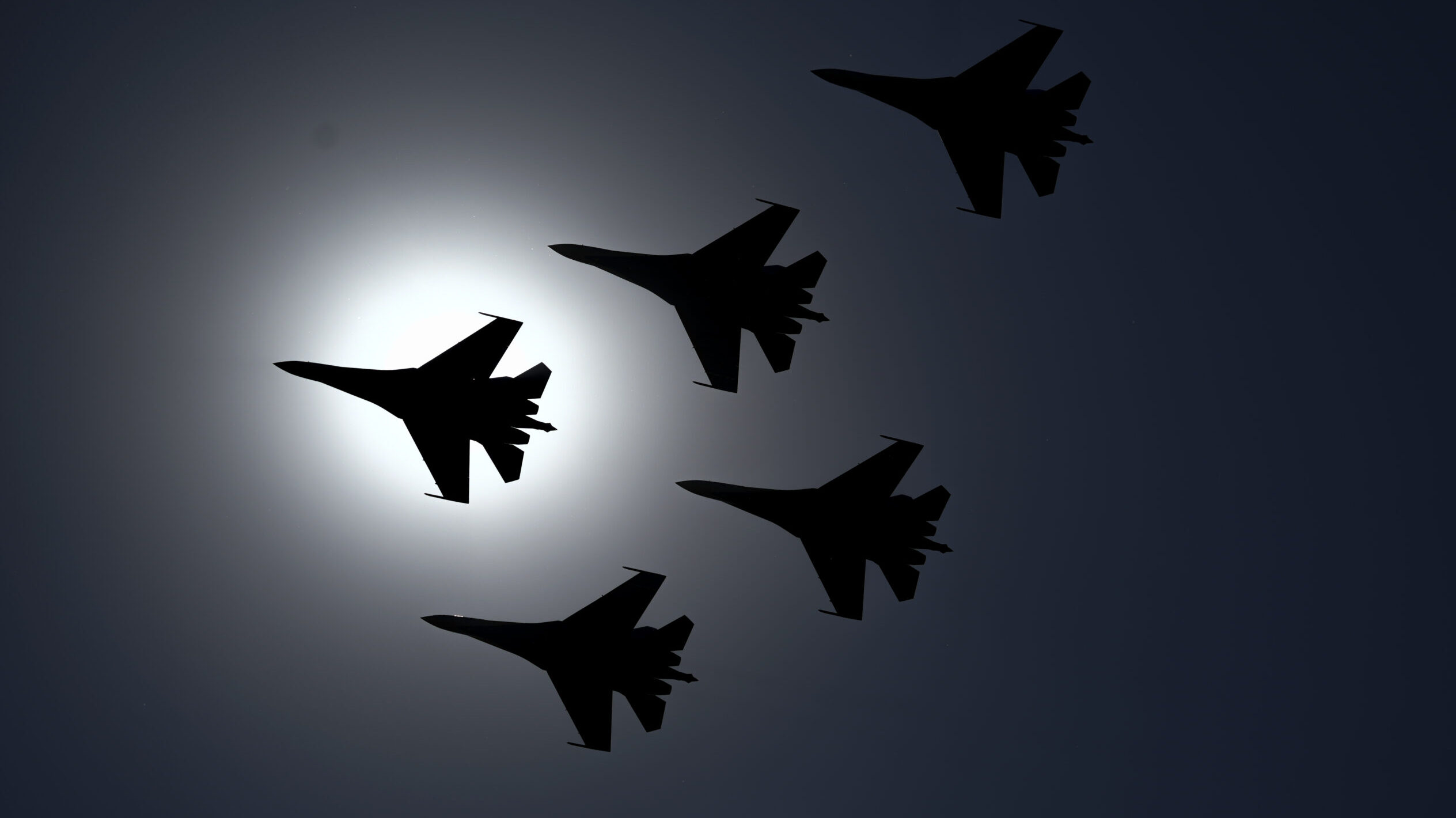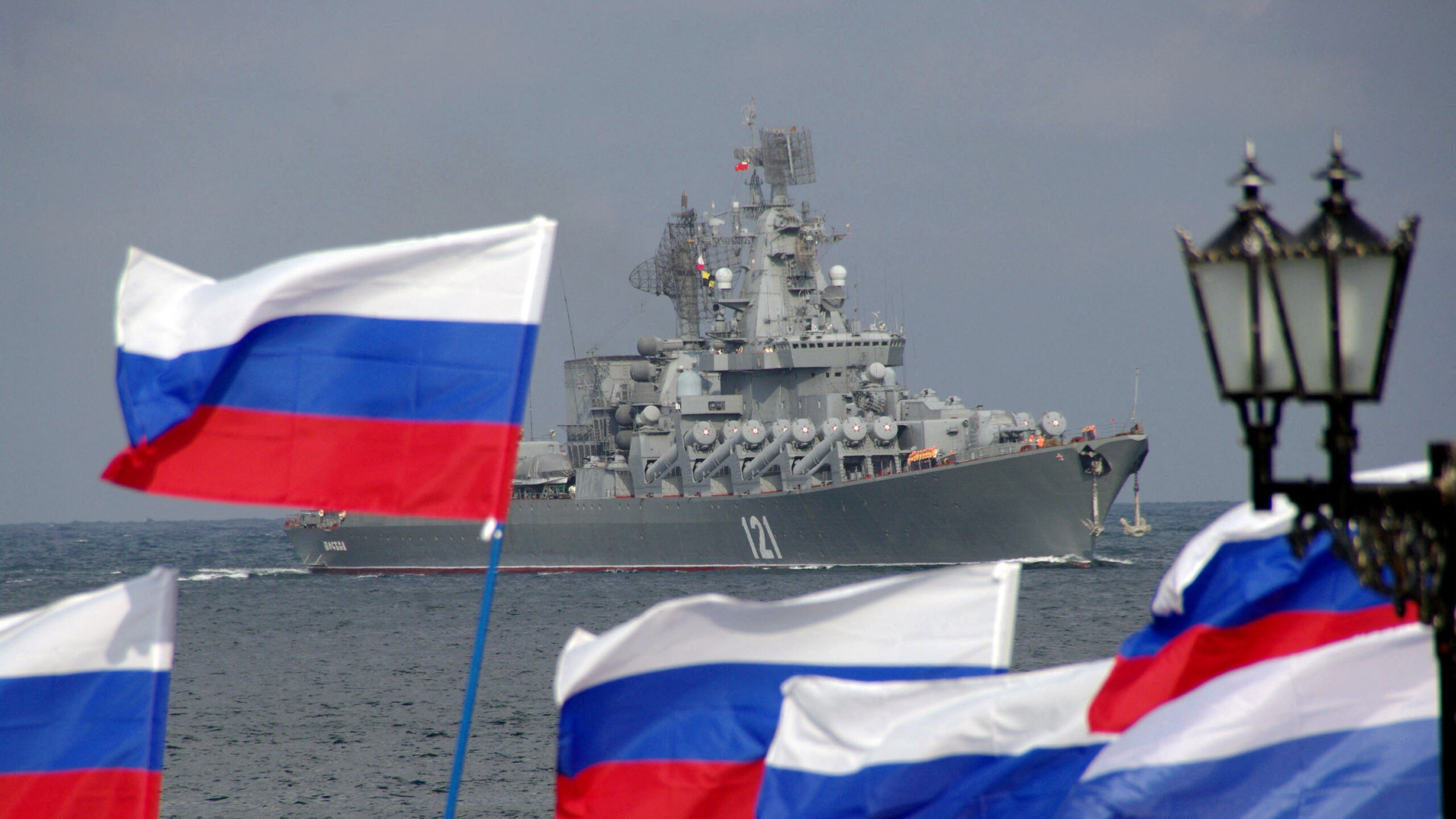What Pentagon leaders say they have learned from year of battle in Ukraine
Breaking Defense has published an article where senior military leaders from virtually every service and specialty have spoken about how they're incorporating lessons from the Ukraine war. Caliber.Az reprints the article.
One year ago Russia invaded Ukraine, sparking a conflict that’s resulted in, by one US estimate, over 200,000 casualties. It also has provided key lessons about modern warfare that, until the last year, were largely academic in nature.
Watching two relatively advanced militaries face off provided a new window into war, a generation beyond the far more asymmetric nature of the War on Terror. And while the US military surely isn’t advertising everything it has learned, the last 12 months saw repeated public declarations from just about every service and specialty about how they’re incorporating what they’ve seen play out in eastern Europe.
The following is a selection of those lessons, curated by the Breaking Defense staff.
On Land: Tank Warfare, Stockpiles and cUAV
Russia’s military invasion of Ukraine came at a pivotal moment for the US Army, one where service leaders had been justifying soldiers’ potential role in the Indo-Pacific region. Instead, the past year of mostly land combat provided those Army leaders with the opportunity to better examine the complexities of a large-scale ground fight with modern weapons and tout the service’s crucial role to the joint fight. It also emphasized how important it was to be able to refill weapon stockpiles.
“We are very much looking every single day in real-time at what’s happening in Ukraine, what we’re seeing with the Russian military and trying to glean as many lessons learned as we can for what we think that means for the Army in the future,” Secretary of the Army Christine Wormuth said in June.
During the early days of the conflict, images of Russian tanks trapped in Ukrainian mud littered the internet and prompted a key question: What role do tanks have on today’s battlefield?
“You don’t need armor if you don’t want to win,” Army Chief of Staff Gen James McConville told reporters during an Oct. 10 press conference when asked about lessons learned from the war and future of the M1 Abrams tanks. Tanks aren’t past their use — after all the US and European nations recently committed to supplying Western tanks to Kyiv to much fanfare — but McConville suggested the question is more complicated.
“You never want to present your adversary with one dilemma… if you just push tanks at them,” those can be defeated just like Russian tanks inside of Ukraine, he said. “That’s why you want infantry, you want armor, you want attack aviation, you want [long-range] fires [and] intelligence. All those systems working together.”
Yes, the tank is still relevant for now, but the Army is looking at its potential vulnerabilities, according to the Director of the Next Generation Combat Vehicles Cross Functional Team, Brig. Gen. Geoffrey Norman.
“Is it tank-on-tank direct fire engagements or is it top-attack from anti-tank guided missiles [or] artillery sensor fuse munitions?” he said in October. “We’re taking a hard look at that through the intelligence that’s coming from what’s happening…. How are we protected against that? What, if anything, do we need to do differently, both from the material standpoint, but also from a tactics and a doctrine standpoint.”
Such an examination is not relegated to combat vehicles, and the Army acquisition chief Douglas Bush told reporters on Jan. 25 the war will likely have a ripple effect across the service weapon requirements. Although he did not detail specific programs, he said the Army will “make adjustments” to rapid prototyping programs based on findings from the Ukrainian battlefield.
In addition to studying battlefield tactics and weapon requirements, Army leaders are also grappling with ways to refill their dwindling weapon stockpiles that have been tapped to support Kyiv. Part of this effort has been to ink new deals with industry and look for ways to shore up the supply chain, but industry questions linger over just how long this heightened demand will remain and whether it’s worth the long-term investment.
“If there’s a policy decision to retain more production capacity for munitions both conventional and precision, there’s gonna be a lot of work that needs to be done. [The Office of the Secretary of Defense] will need to lead it,” Bush said.
“In terms of looking across the whole industrial base and the different conflicts we might be faced with: How do we prepare to mobilize rather than just assuming industry can do it with a bunch of money?”
One area the Army is especially interested in emphasizing: defending against drones. The Ukraine conflict is among the first major conflicts to feature a ubiquity of small drones making outsized contributions. That’s a danger for the Army, Wormuth said this summer. McConville has equated drones to the improvised explosive devices that killed US troops in Iraq and Afghanistan. The Army is the leading counter-drone efforts for the Defense Department.
“Drones and other unmanned systems are going to pose significant challenges for us, again, part of why we’re looking at modernizing our air and missile defense system,” Wormuth said.

In Space: Criticality Of The Domain, Importance Of Proliferation
Space Force chief Gen. Chance Salzman on Jan. 13 said that the war in Ukraine has above all else highlighted the centrality of space assets to winning a war.
“[I] I think it would be fair to say that what we’re observing is the criticality of space in modern warfare,” he told the Space Force Association.
The service, he said, already is taking away a number of insights from the use of satellites in the Ukrainian theater. These include the fact that it is easy for an adversary to shut down a single satellite, but proliferated systems such as SpaceX’s thousands of Starlink internet satellites, are much more resilient in the face of attacks.
Another observation, he said, is that the ground systems for spacecraft also are very vulnerable to cyber attack.
Indeed, Viasat’s communication network in Ukraine suffered a cyber shutdown early in the conflict similar, and hacking attempts were made against Starlink to lesser effect. The Russians also have been routinely jamming GPS signals in the region.
In addition, Saltzman noted the outsized role commercial satellites have been playing — both for communications and remote sensing for intelligence, surveillance and reconnaissance.
Commercial remote sensing satellites, including those operated by Maxar, Planet, Capella and BlackSky, further have contributed to the war for “hearts and minds” in the US and worldwide. Images of the devastation caused by the invading Russian forces have played heavily into public support for Ukraine’s cause, as well as providing much needed intelligence to the embattled Kyiv government in a way that US spy satellites could not due to secrecy constraints.
That became evident in even the early days of the war. David Gauthier, the head of commercial operations for the National Geospatial-Intelligence Agency, on April 6 explained that it was “actually surprising to see that information advantage on the battlefield is so far countering superior equipment and mass.”
He concluded: ““The power of information is winning.”
In The Air: Superiority Or Bust
Among the many surprising failures of the Russian military at the outset of their invasion was the Russian air force’s inability to controls the skies — the kind of the air dominance around which much of US warfighting strategy revolves. Despite having a much larger force in the air, one year later the Russian military does not appear close to having air dominance, even as it is struggling to replace losses to its air force.
“Everyone is learning from current events in Ukraine,” US Air Force Chief of Staff Gen. CQ Brown told the Aspen Security Forum in July. “From a military perspective, we’re also paying close attention to how Russian forces initially proceeded and how the Ukrainians reacted. And while it’s not a new lesson, we’re seeing clearly the value of air superiority and the reality that it’s not guaranteed.”
Brown emphasized that for 20 years of the US had been taking on relatively poorly equipped foes that “did not have air forces or air defenses, and those are capabilities the Air Force will have to deal with in the future.”
There have been air-to-air engagements, the likes of which gave rise to the likely apocryphal Ghost of Kyiv, but for the most part Ukraine has been fighting from a defensive position, emphasizing the value of ground-to-air defense systems.
Writing for the Atlantic Council in August, Lt. Col. Tyson Wetzel said Russia’s failures should teach the US and its allies to “put special focus” on destroying mobile air-defense systems during operations. Second, they should better integrate cyber operations to aid in disrupting enemy defenses. Third, they should understand the importance of counter-UAS strategies, as it’s become clear “relatively low-cost UASs and drones allow combatants to deploy large fleets of aircraft, contest air superiority, and conduct precision strike.”
In the meantime, Air Force Secretary Frank Kendall said there are several lessons he would “prefer” that China learn from the war as well.

Online: The Value Of Zero-Trust, Info-Sharing And The Spectrum
For Defense Department Chief Information Officer John Sherman, the conflict has put a spotlight on zero-trust implementation and getting rid of the “technical debt” the department has accrued over the past 20 years on its IT and weapon systems. It’s an area that the crisis has shown cannot be delayed, he told Breaking Defense in a January 27 interview.
Sherman has targeted fiscal 2027 for department-wide zero trust implementation, and DoD in November released a zero trust strategy outlining what it’ll take to achieve “targeted” zero trust — a required minimal set of activities needed by FY27 — and more “advanced” capabilities.
Meanwhile, Russia’s attacks on military and civilian targets has “underscored how important it is to have interagency and intergovernmental connections,” Sherman said, like with the Cybersecurity and Infrastructure Security Agency and Department, Homeland Security and the National Security Council.
“And then also, our alliance interoperability is imperative on our cyber defenses,” he said. “Of course, in this context, we’re talking about with NATO. Working closely with our NATO partners… to make sure as we’re deploying zero-trust, we’re sharing our lessons learned and that we’re driving towards common standards, and recognizing that not only the Russian threat but others such as our pacing challenge of China and others do represent very capable adversaries that we must be prepared to defend against.”
Sherman’s office also works hand-in-hand with the Defense Information Systems Agency, which has been vocal about the Ukraine war showing the need to bake in resilient information-sharing as it moves forwards with building out the Pentagon’s sprawling Joint All Domain Command and Control initiative.
Another “burgeoning” area that Sherman has been focused on is electromagnetic spectrum operations. The conflict in Ukraine has emphasized the need for more investments and working with the military services on doctrine.
“And one of the things I’ll add on this, not only as we look at overseas applications… but also training and conducting operations such as homeland security in the homeland as we prepare forces to go overseas or protect our own borders,” Sherman said.
“And that’s why as we look at spectrum domestically, we’re always in a balance between making sure our economic dominance here in the US has everything it needs for 5G and next-G application, but also working with the Congress, working with industry and of course the White House and others on making sure our forces, the joint force, can continue to train on air-, land- and sea-based radars that are so critical for spectrum operations in combat situations.”
Protecting the Defense Industrial Base from sophisticated cyber threat actors is another area that Sherman highlighted, saying he’s “very sympathetic to the challenges this presents to industry, particularly for small and medium businesses.”
Although the US is in a better position to defend itself now than it was just a few years ago, Sherman said it’s something he’ll never be completely satisfied with as long as he’s in his position as DoD CIO.
“But we are moving in the right direction to bolster what we need to do, but I’ll tell you, it’s something we’re never going to rest on…we’re gonna keep pressing along, and I’ll never be satisfied with where we are as long as I’m in this position,” he said.

In Maritime Environments: Agility Over Rigidness, Capability Over Capacity
Since the start of Russia’s war in Ukraine, Marine Corps Commandant Gen. David Berger has stressed the importance not to jump to conclusions, adding that he and others have made severe programmatic errors when they’ve tried to assess the early implications of active conflicts.
Whenever asked about Ukraine, however, one of the first things Berger mentions is how ubiquitous intelligence, surveillance and reconnaissance assets have become on a modern battlefield. So much so, the force is having to explain to its younger Marines how dangerous even having a cell phone turned on can be.
“They don’t ever think anything about pressing a button,” he told reporters in December. “This is what they do all day long. Now, we have to completely undo 18 years of communicating all day long and tell them that’s bad, that will get you killed. So, turn your cell phone off.”
Hand in hand with this new intensity of ISR comes the need to be more “agile” and “dispersed,” Berger has said, a notion that aligns with his keystone project, Force Design 2030.
For the Navy, Chief of Naval Operations Adm. Michael Gilday said a chief lesson for his service has been the need to prioritize capability over capacity.
“If we want to talk just about capability and you want a force that can — that’s ineffective, take a look at the 125 [battalion tactical groups] in Vladimir Putin’s position around Ukraine,” Gilday told the Sea Air Space exposition last year. “That’s not the force that any of us want.”
The admiral’s remarks allude to his own arguments to Capitol Hill that, given the constrained defense budgets he is facing, the Navy must prioritize having highly capable ships rather than large quantities of them.
Gilday, and many other Pentagon leaders, have also remarked on the Ukrainian people’s “will to fight” and how much that has contributed to the country’s success in fending off a much larger invading force. Sgt. Maj. Troy Black, the most senior enlisted Marine, during a roundtable with Berger hinted at that as well, saying the US does not win conflicts through sheer quantity.
“What’s our nation’s greatest strategic advantage over any adversary? It’s the individual,” he said. “It’s not the equipment. We will never win in massive quantities of equipment against a peer adversary. We just don’t do that. It’s the quality of our people.”








